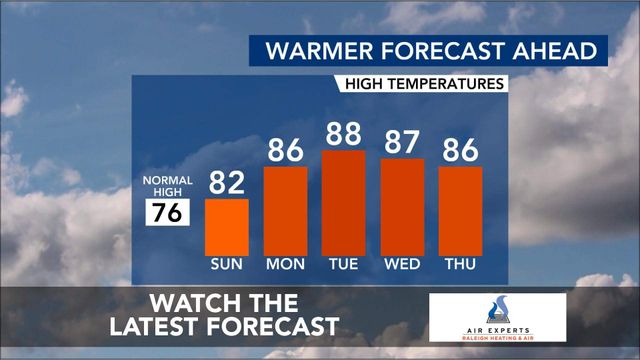Nothing to sneeze at: Raleigh ranks ninth in US for allergies

The Asthma and Allergy Foundation of America (AAFA) released its 2024 Allergy Capitals report Thursday, with a Triangle city ranking in the top 10.
Raleigh is ranked No. 9 in the list of most challenging places to live with allergies. The City of Oaks has a higher-than-average medicine use and a lack of access to allergy specialists, according to the data.
Why is Raleigh in the top 10? The abundance of trees around central North Carolina and warmer periods during February and March leads those trees to release more pollen.
"The main reason we have so much pollen is because we have so many flowering trees," said WRAL meteorologist Aimee Wilmoth. "These trees are releasing more pollen compared to past years because our spring starts earlier and lasts longer due to climate change."
The full report is available at allergycapitals.com.
Here are the Top 20 cities for 2024:
- 1. Wichita, KS
- 2. Virginia Beach, VA
- 3. Greenville, SC
- 4. Dallas, TX
- 5. Oklahoma City, OK
- 6. Tulsa, OK
- 7. Richmond, VA
- 8. Des Moines, IA
- 9. Raleigh, NC
- 10. Fayetteville, AR
- 11. Allentown, PA
- 12. Baton Rouge, LA
- 13. Sarasota, FL
- 14. Houston, TX
- 15. Columbia, SC
- 16. Orlando, FL
- 17. Little Rock, AR
- 18. Chattanooga, TN
- 19. Greensboro, NC
- 20. Kansas City, MO
Durham ranked No. 62. Winston-Salem (No. 47) and Charlotte (No. 55) were also on the list of top 100 metro areas.

Tree pollen usually peaks in April in North Carolina while grass-based pollen peaks in May.
Also of note, the length of the average growing season increased by four weeks from 1970 to 2021.












